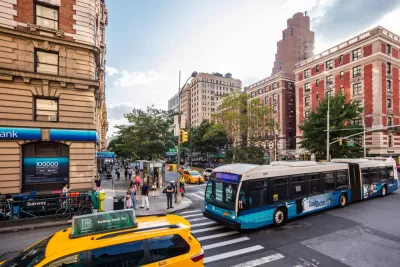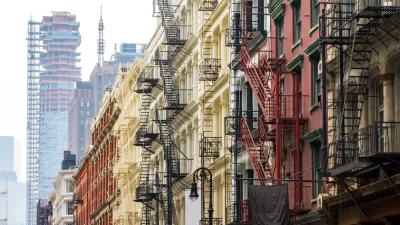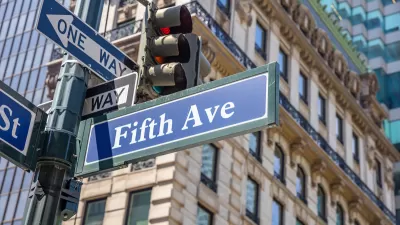Strong place attachment makes it difficult for New Yorkers to settle into their new homes, but many are finding ways to recreate their favorite parts of the city elsewhere.

Some New Yorkers who moved away during the last year and a half are struggling to fit into their new surroundings, writes Jennifer Miller. "Many of the estimated 400,000 New Yorkers who left the city in the early months of the pandemic have since returned, but among those who moved permanently, many have found the transition to be emotionally fraught." The challenges have "some people grappling with their decision to leave, even if they know they aren’t going back." Former New Yorkers "also prioritized access to public transportation above the average renter, even in cities that are not known for their transit systems," leaving them more dissatisfied with the walkability–or lack thereof–outside of New York.
Katherine Loflin, a consultant who studies emotional and sociological attachments to place, "helped pioneer the study of 'place attachment'— how our bonds to a specific location help individuals and communities thrive." According to her research, "strong place attachment depends on three factors: the ability to enjoy social opportunities, pleasing aesthetics and a sense of belonging or welcoming." People thrive when they find a familiar sense of community and what Loflin calls heart. "Heart is what Ms. Loflin calls 'the secret sauce' of place attachment. And New Yorkers have a lot of it."
But for many who have made the move elsewhere, the reward can be worth it, says Laura Young of the New Denizen blog. "Worst case scenario, they move back to New York; best case scenario, they are living a happier, more fulfilling life.
FULL STORY: Why Is It So Hard to Say Goodbye to New York City?

Maui's Vacation Rental Debate Turns Ugly
Verbal attacks, misinformation campaigns and fistfights plague a high-stakes debate to convert thousands of vacation rentals into long-term housing.

Planetizen Federal Action Tracker
A weekly monitor of how Trump’s orders and actions are impacting planners and planning in America.

San Francisco Suspends Traffic Calming Amidst Record Deaths
Citing “a challenging fiscal landscape,” the city will cease the program on the heels of 42 traffic deaths, including 24 pedestrians.

Defunct Pittsburgh Power Plant to Become Residential Tower
A decommissioned steam heat plant will be redeveloped into almost 100 affordable housing units.

Trump Prompts Restructuring of Transportation Research Board in “Unprecedented Overreach”
The TRB has eliminated more than half of its committees including those focused on climate, equity, and cities.

Amtrak Rolls Out New Orleans to Alabama “Mardi Gras” Train
The new service will operate morning and evening departures between Mobile and New Orleans.
Urban Design for Planners 1: Software Tools
This six-course series explores essential urban design concepts using open source software and equips planners with the tools they need to participate fully in the urban design process.
Planning for Universal Design
Learn the tools for implementing Universal Design in planning regulations.
Heyer Gruel & Associates PA
JM Goldson LLC
Custer County Colorado
City of Camden Redevelopment Agency
City of Astoria
Transportation Research & Education Center (TREC) at Portland State University
Jefferson Parish Government
Camden Redevelopment Agency
City of Claremont





























